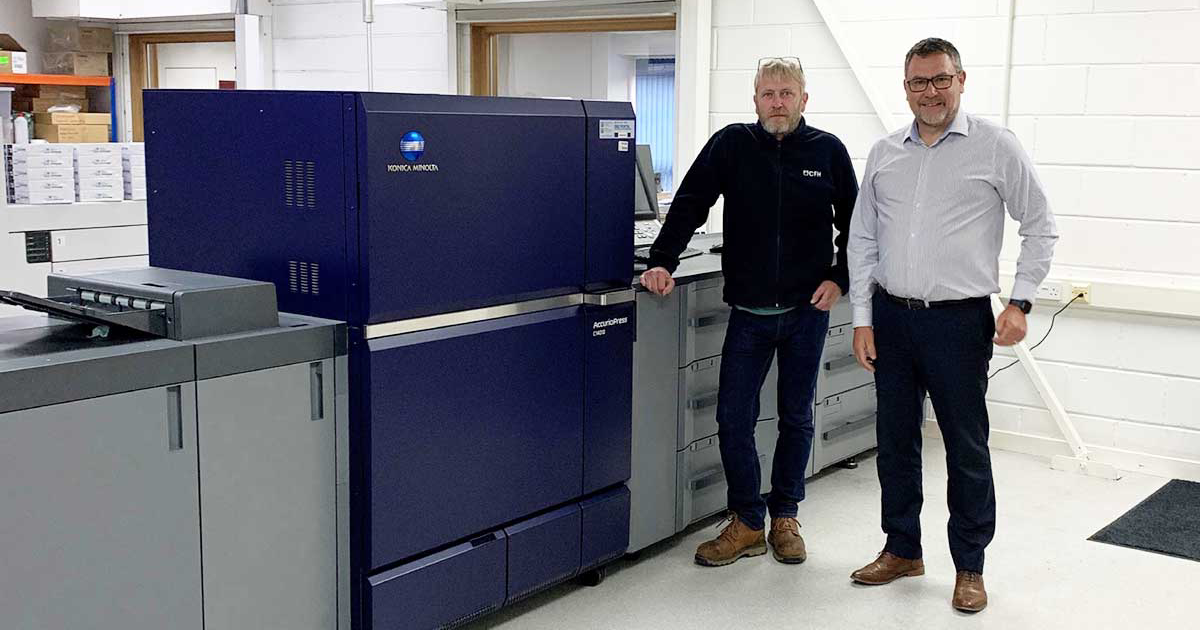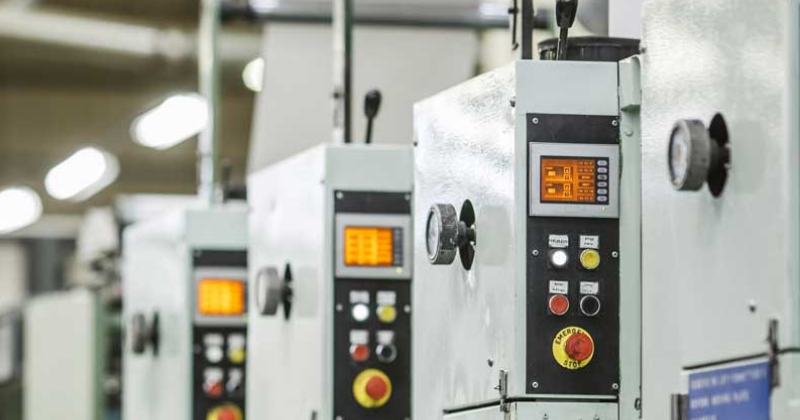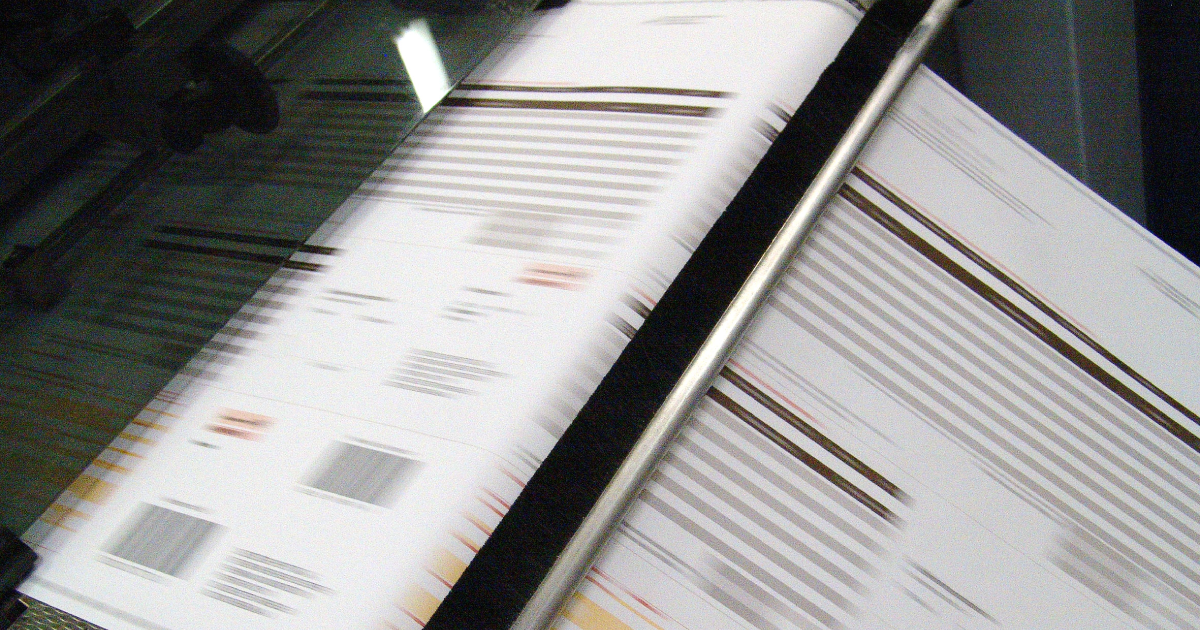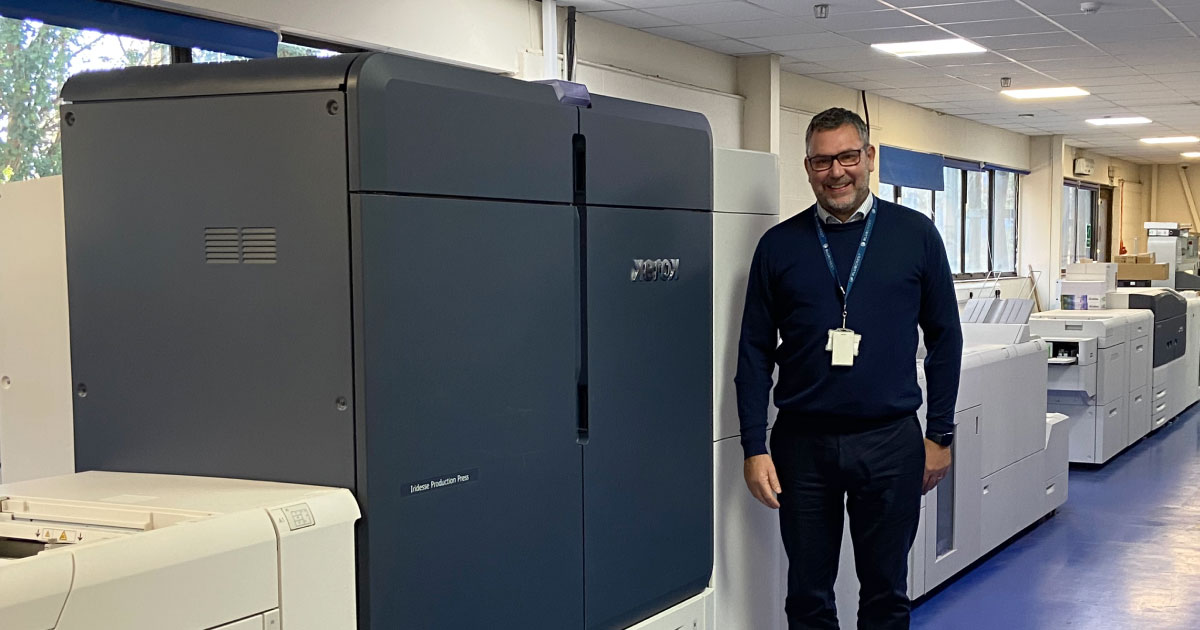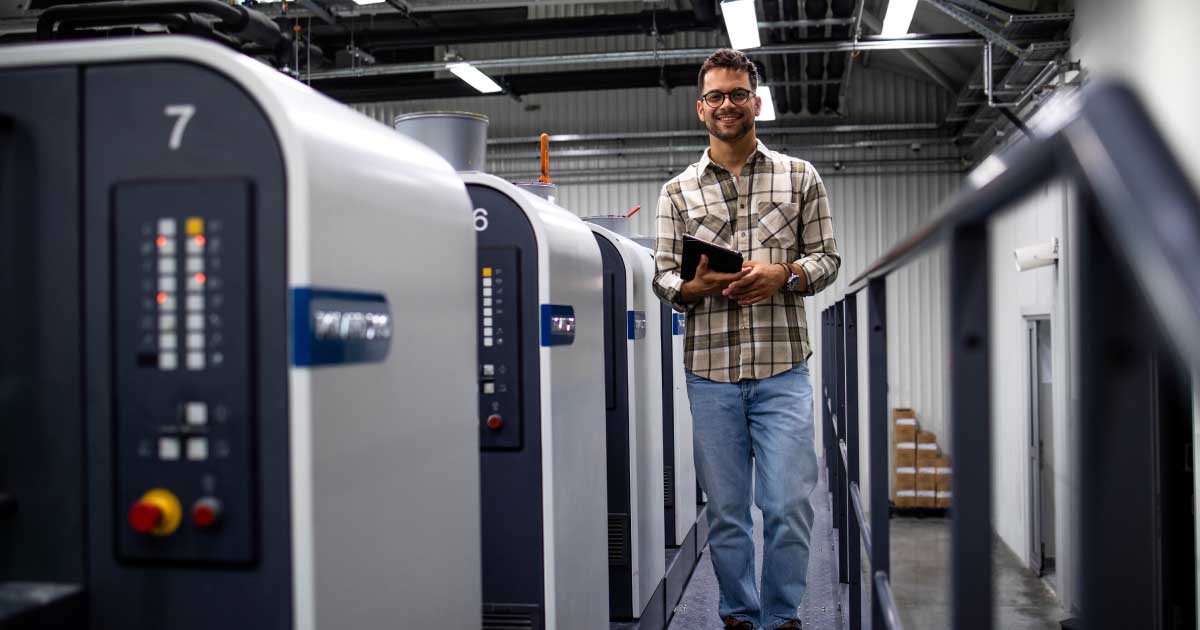CFH has been offering digital print services since the early 1990s and has been pivotal in our success in business outsourcing. Digital print currently makes up 94% of our sales within the group.
Digital print is one example of how our company has evolved over the years, transitioning from a traditional print supplier to a multi-channel communications powerhouse. As our customer needs and requirements evolve, CFH adapts their solutions in order to support our customers’ objectives.
But what is digital print? How does it differ from traditional printing methods such as lithographic print? And how can you use it to enhance other communication methods?
Experience the world of digital print as Julian Smith, our expert guide, leads the way.
Digital print is a way of printing a digital-based image which is sent to a printer that uses 1-7 colours to replicate the image and print it onto a variety of materials. As opposed to lithographic print, where the image is placed on a metal plate and printed. Digital print is a more modern printing method that was invented in the 1960s.
The two most popular methods of digital printing we use today are laser and inkjet. The use of these printing methods is commonly used in all walks of life.
The process involves complex computing to tell the machine how to create the image on the material. Digital files, such as PDFs or desktop publishing files, can be sent directly to the digital printing press to print on the chosen material.
The key benefits of digital print compared to litho print are reduced waste, consistent high-quality copies, variable imaging, flexibility, the ability to print on a broader range of media, and reduced power consumption.
Digital printing is a versatile method predominantly used on paper, however, its applications extend to photo paper, canvas, fabric, cardstock and an array of other materials.
Because of its capability to print on an extensive range of materials, digital printing opens up a world of possibilities for producing a range of general print products, including leaflets, letters, A3 folded documents, postcards and much more.
The most significant distinction between digital printing and lithography is that there is no need to replace the printing plate. Unlike lithographic printing, where plates are repeatedly swapped, digital printing streamlines the process by bypassing this requirement altogether meaning, less waste.
As a consequence, digital printing boasts a faster turnaround time and lower overall cost for short to medium-run lengths. The absence of plate production and replacement not only reduces expenses but also eliminates the need for dedicated staff to manage these processes, streamlining the entire printing process. This also makes the process simpler, as it does not require specialist knowledge of pre-press or ink/water balancing.
A quicker, more straightforward process means that it’s the ideal solution to produce one-demand or smaller runs, with lower quantities. This means the printing process can begin at the time of the order, ideal for anyone with a last-minute requirement for print.
The integration of computing technology in digital printing enables full customisation. This means that we have the ability to add variable data, making each image unique and this is the main key benefit when compared to more traditional printing methods. However, it also allows us to add variable data to preprinted lithographic base print for those longer-run requirements.
One of the biggest benefits of the printed products themselves is that digital print has expansive design possibilities, with full colour and gradation print. The digital data can be used to make an immediate colour match, which can then produce a single sample if required, and then go straight through to production.
In today's competitive landscape, meeting customer expectations is essential, with 90% of customers now expecting consistent interactions across various channels. Relying on a single method fails to meet these expectations, making it essential for businesses to embrace a multichannel approach to ensure customer satisfaction and retention.
Print works seamlessly with digital methods of communication, such as social media, email and text messaging. When executed effectively, it opens up the ability to:
Using a mix of physical and digital forms of communication (a multichannel approach) enables you to ensure all communication touchpoints deliver the right message at the right time.
By adopting this strategy, you remove the limitations such as time, location, date, or specific channels. You can reach your audience when they scroll on social media as soon as they wake up, with billboards during their commute, when they are opening their post once they are home and as they watch tv in the evening. This seamless integration of various touchpoints ensures your message reaches them effectively and efficiently throughout their daily routines.
89% of customers are retained by companies with omnichannel engagement strategies. By targeting and engaging with your audience at their optimal moments, along with delivering tailor-made content during these interactions, you significantly enhance audience engagement.
72% of consumers say they would rather connect with brands and businesses through a multichannel approach. This enhances the overall communication experience you have with your varying audiences while also providing your organisation with a deeper understanding of their preferences. These valuable insights can then be integrated into your communication strategy, allowing you to create audience profiles and transform your messages into meaningful touchpoints.
Digital and lithographic print is an integral part of CFH services. To find out more about CFH Services, contact our expert Julian on 07825 202319 or email julian.smith@cfh.com.
